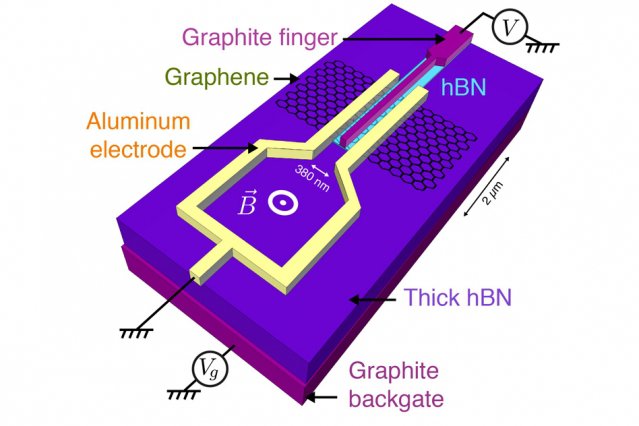Graphene has already received a lot of attention since scientists first discovered the wonder material, and now it’s just been given another boost as physicists at MIT uncover a way to use graphene as a powerful superconductor. At just one atom thick, stronger than steel and tougher than diamonds, it’s no real surprise that we find this material to be even more amazing. But, now, for the first time ever, scientists can demonstrate the superconductive capabilities of graphene by putting it in contact with other superconductors.
While regular conductors such as copper or silver are good for carrying an electrical current, electrons bounce off defects in the material and lose energy as a consequence. But, with superconductors, electrons don’t lose any energy as they pair up and travel through the material as one. This is a big deal because if we can find a way to achieve superconductivity at room temperature, this will allow us to create much more efficient electronic devices and power lines. At the moment, scientists have only seen graphene become superconductive at super-chilled states, but it’s a start and it’s still worth getting excited about.

In a recent study carried out by MIT physicists, a flake of graphene was placed in between aluminum and chilled to around 20 millikelvin (-273.13 degrees Celsius or -459.6 degrees Fahrenheit) to switch on the aluminum’s superconductive powers. Lead researcher Landry Bretheau said, “[The superconductors] are actually giving graphene some superconducting qualities. We found these electrons can be dramatically affected by superconductors.” What’s even more important is that the electrons inside graphene act in pairs that allow materials that aren’t traditionally superconductive to carry a supercurrent efficiently.
“Electrons in a superconductor dance harmoniously in pairs, like a ballet, but the choreography in the left and right superconductors can be different,” Bretheau advised. “Pairs in the central graphene are frustrated as they try to satisfy both ways of dancing. These frustrated pairs are what physicists know as Andreev states; they are carrying the supercurrent.” It’s a breakthrough in the world of physics as is the first time it’s been possible to show this effect within any two-dimensional material. Moving forward, the findings from these experiments could help build an error proof quantum computer someday. “There is a huge effort in the condensed physics community to look for exotic quantum electronic states,” said Bretheau.
More News to Read
- Is Cryogenic Sleep the Best Option When Implementing Interstellar Traveling?
- Are Dwarf Planets the Key to Finding Alien Life?
- Intricate Brain Surgery Carried Out Successfully in Under 3 Minutes Thanks to this Robot
- How Nvidia’s Artificial Intelligence Will Team up With CCTV to Analyse Your Every Move
- NASA Considers Multiple Proposals for Unmanned Solar System Exploration











